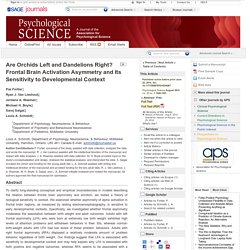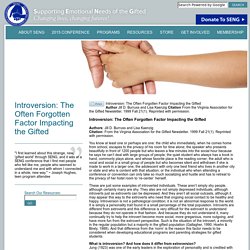

Jen Adkins
Quiet%20Teaching%20Final.pdf. How to teach a young introvert. What should we do with the quiet kids?

A conversation with Susan Cain on the future of classroom education. Susan Cain sticks up for the introverts of the world. In the U.S., where one third to one half the population identifies as introverts, that means sticking up for a lot of people. Some of them might be data engineers overwhelmed by the noise of an open-floor-plan office. Others might be lawyers turning 30, whose friends shame them for not wanting a big birthday bash. Cain remembers a childhood full of moments when she was urged by teachers and peers to be more outgoing and social — when that simply wasn’t in her nature.
We gave Cain a call to talk about how schools, both right now and far off in the future, could better care for the needs of introverted students. What kind of response did you get to the part of your TED Talk about the education system and how it isn’t optimized for introverts? “What an extroverted act it is in the first place to go to school. Interesting. Susan Cain: The power of introverts. Reaching All High School Students: A Multi-Tiered Approach. Tanya: The ways in which a multi-tiered system of support is put to work in a middle school or a high school program looks a little different than elementary.

Ashley: There's not always as much of a delineation between tier two and tier three once you hit secondary, because the students are taking so many different classes and content really becomes number one. Tanya: Unlike elementary, where you can pull a small group out, that's not always so in high school, because if you pull a small group out, they might be missing content.
Lynda: So for some students, it's as simple as providing time and opportunity to go meet with the teacher after school for additional help. In some courses, it means our learning community leaders who have expertise in special education, in school psychology, in reading education, are pushing into some courses where there is a cohort of students that needs a little additional support. Yeah, so you see how he's starting here and then he goes there. Teacher: Yes. 092. Studies Illustrate Plight of Introverted Students. Managing the College Classroom: Perspectives from an Introvert and an Extrovert, College Quarterly, 2006. Are Orchids Left and Dandelions Right? Frontal Brain Activation Asymmetry and Its Sensitivity to Developmental Context. Louis A.

Schmidt, Department of Psychology, Neuroscience, & Behaviour, McMaster University, Hamilton, Ontario, L8S 4K1 Canada E-mail: schmidtl@mcmaster.ca Author Contributions P. Fortier conceived of the study, assisted with data collection, analyzed the data, and wrote the manuscript. R. J. Van Lieshout assisted with the intellectual direction of the manuscript and helped with data analyses. Abstract To clarify long-standing conceptual and empirical inconsistencies in models describing the relation between frontal brain asymmetry and emotion, we tested a theory of biological sensitivity to context. Article Notes Declaration of Conflicting Interests The authors declared that they had no conflicts of interest with respect to their authorship or the publication of this article. Introversion: The Often Forgotten Factor Impacting the Gifted « SENG.
Introversion: The Often Forgotten Factor Impacting the Gifted Authors: Jill D.

Burruss and Lisa Kaenzig Citation: From the Virginia Association for the Gifted Newsletter. 1999 Fall 21(1). Reprinted with permission. These are just some examples of introverted individuals. What is introversion? Henjum (1982) sees introverts as belonging to two distinct groups: Group A: Self-sufficient, confident, hardworking, with firm goals, self-actualizing, reserved, preferring activities that involve inner experience and introspection; and Group B: Shy, timid, withdrawn with low self-concept, lacking in communication skills, demonstrating fear of people, dread of doing things in front of others, who prefer being left alone. Orchids and dandelions: How some children are more susceptible to environmental influences for better or worse and the implications for child development. PsycNET - Display Record. PsycNET - Display Record. PsycNET - Display Record.